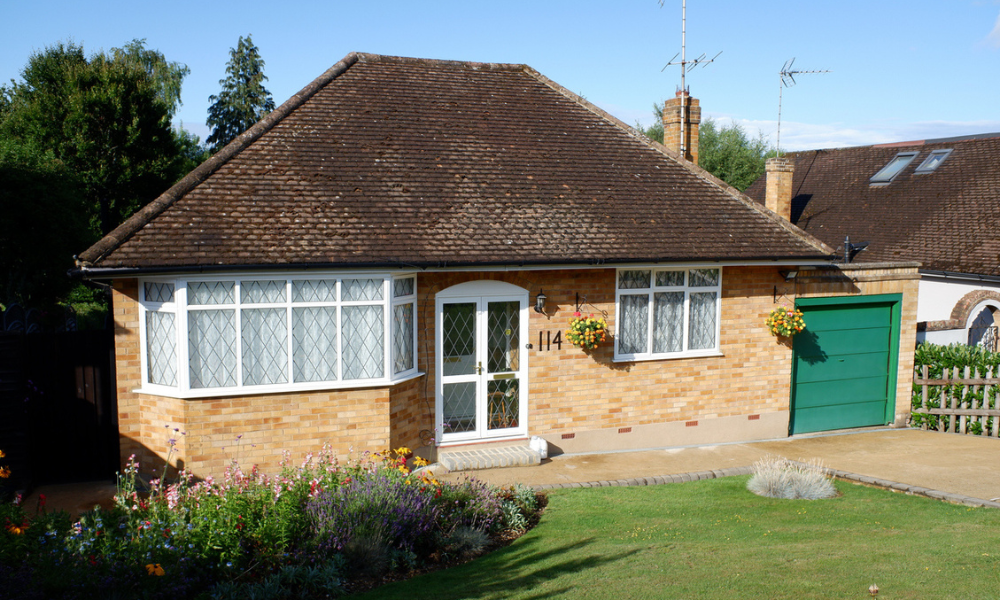Single-storey house comes top in survey of would-be buyers

Bungalows appear to be back in fashion after coming top in a recent survey of the most popular type of properties in Britain.
The single-storey house traditionally associated with more mature homeowners was named the most desirable future property purchase, according to a survey by estate agents Strutt & Parker.
In a poll of 2,000 people who said they were planning to move in the next five years, 22% revealed they wanted a bungalow as their next home, followed by 18% who said they wanted a new build and 16% who preferred a cottage.
The survey used a combination of registered buyers, sellers and tenants, a report in the Daily Mail said.
Read more: The rise of the (rented) bungalow?
The results were surprising, given that bungalows are often associated with less mobile homeowners who prefer more easily accessible properties without an upper level.
Homebuilders also eschew these types of properties as they occupy a larger footprint and can be more expensive to build.
However, another recent study conducted on behalf of Paragon Bank by the Social Market Foundation (SMF) - and reported by Mortgage Introducer in June - found that homes headed by a person over the age of 55 will account for more than a quarter of all privately renting households by 2035.
It concluded that bungalows could be back in fashion over the next decade amid a projected increase in the number of private tenants who are over the age of 55, adding that they could prefer the practical benefits of single-storey homes.
Edward Church, of Strutt & Parker, told the Daily Mail that bungalows had always been popular with those buyers who wanted to downsize as well as those who wanted to settle in a home that would see them “into retirement and old age”.
He added: “Bungalows are often called 'forever homes' as they remain accessible into later life, thanks to their lack of stairs.”
The downside is that they are often in need of extensive renovation when they come on the market for sale, as James Shaw of Prime Purchase explained in the same report.
“Many bungalows tend to have been lived in by the elderly, for obvious reasons, and are often not in great condition. However, the good news is that bungalows lend themselves quite well to refurbishment as the walls are not load bearing in the same way as they are in a two-storey property,” he said.
However, he also confirmed that demand outstripped supply, adding that bungalows tended to be more expensive.
He said: “In terms of building new bungalows, the problem is that we are a small island with limited land and prices are so expensive that if you can get two storeys and double the square footage by going up, then developers will.
“If you have 3,000 square feet on the ground floor and the same above, you won't necessarily be doubling the value of the property but it will increase.”
Read more: The demise of the British Bungalow
He suggested the adoption of more modern construction methods and materials to attract more buyers.
According to recent data, less than 1% of new builds were bungalows in 2020 (1,833), representing a 23% drop compared to 2019 and an 80% reduction compared with the 9,347 bungalows that were built 20 years earlier.
Paragon’s June survey of more than 1,300 tenants in the private rented sector (PRS) nonetheless showed that the percentage of people living in a bungalow was expected to treble from 3% to 9% in 10 to 15 years’ time.
Richard Rowntree, Paragon Bank managing director of mortgages, told MI in June that there was evidence demographics of private renters was shifting and that the profile of tenants was getting older.
He said: “Bungalows are typically regarded as unfashionable, but they offer practical benefits for people who may not be as mobile as they once were and certainly have their place in the PRS.
“Landlords are not yet buying this type of property in scale, but we would expect that to accelerate to match forecast levels of tenant demand for bungalows in future.”
While 18% of households were private renting and headed by somebody aged 55 or over, that figure is expected to rise to 27% of households by 2035, according to the same survey’s projections.
This is in stark contrast to an earlier survey carried out almost five years ago, which boldly predicted the demise of the bungalow.
At the time, the research by HouseSimple.com noted that bungalows accounted for less than 7% of houses for sale in the UK, adding that there was little incentive for developers to build single-storey houses due to lower profit margins.
In almost three quarters (73.3%) of 75 major towns and cities across the country, bungalows accounted for less than 10% of all houses on the market in 2017.



